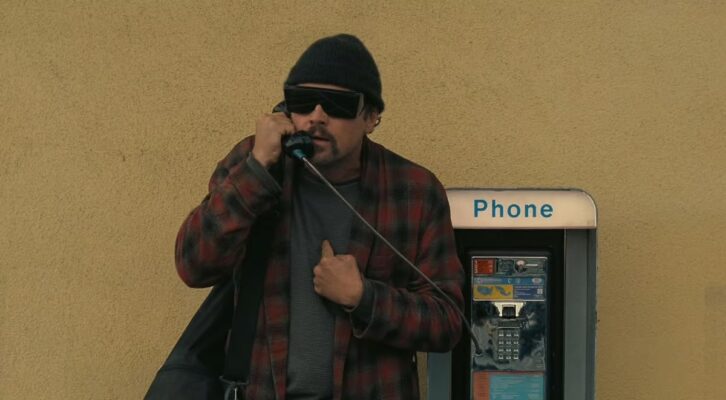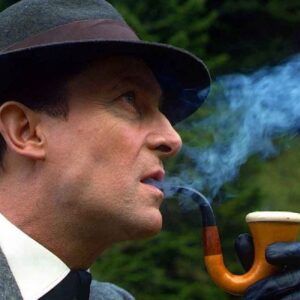I didn’t realize I’d written a crime novel until after I’d signed a book deal.
How does that happen, you might ask? Surely a writer has his or her genre well and truly mapped out before they pick up the pen, right?
In my case, not so much. It was only once I began whipping the manuscript into shape with my wonderful editor at Text and seeing some early ideas for cover designs that it began to dawn on me: Paper Cage, my sketch of life in small-town Aotearoa / New Zealand, was a crime novel. It would eventually find a home in the crime section of my favorite book shops back home, just before Agatha Christie and SA Cosby. It would be featured at the Harrogate Crime Writing Festival. And, most significantly, it would be read by scores of crime fiction aficionados.
The whole experience has made me wonder: how much does genre really matter? What does it mean for a novel to be categorized in ways that might surprise the author? And finally, am I now an official Crime Writer?
To answer these questions, it helps to take a step back. To the scene of the crime, if you will.
I started writing the novel that would eventually become Paper Cage in a fit of homesickness. In 2020, I was coming to the end of a creative writing master’s program at the University of Kent, studying at their satellite campus in Paris. Channelling some of my frustrations at my inability to return home to my native New Zealand due to the country’s strict COVID lockdown policies, I started working on some character sketches featuring an overlooked file clerk squirreling away in a small-town police station basement. Like everything I’ve ever worked on, the project began with a search for a distinctive voice for the piece—a way for the story to communicate something only I knew.
Soon, I was hearing from my protagonist, Lorraine, about all sorts of daily concerns. The biscuit selection in the staffroom, for example, or the fact that everyone else in the building expected her to be the one to fetch milk for the fridge. Cranky, forgotten, and more than a little lonely, Lorraine had plenty to tell me; and all I had to do was listen in the right way.
So, I had a few sketches coming along, but they weren’t a story. Not yet. It was only when a few others in my workshop pushed me to consider what might be happening in the files Lorraine was working on that I imagined some missing children, a niece in trouble, and a too-friendly neighbour with secrets of her own. Now, I had the components of the story. I had a clock, a growing list of conflicts and grievances, and a job for Lorraine to do. A big job, as it turned out: soon, she’d be thrust into the case, using her extensive local knowledge and whānau / family connections to get to the bottom of what was really going on in Masterton.
In truth, genre was the last thing on my mind. The idea that Lorraine’s story would ever make its way off my handwritten notes, into a printing press, and wind up in front of the nose of a reader besides my mum was simply too whimsical and unlikely for me to worry about. I was working on this story out of sheer joy and selfishness. And because I missed my family.
Being so far away from Masterton, I found it transporting to talk to a character there. Lorraine has so many things in common with members of my immediate and extended family that working on the story was like an endless version of the best kind of Zoom call—without any awkward pauses or technical difficulties. By mapping out a set of problems for Lorraine to overcome, I gave myself a canvas to sketch out a version of my hometown and spend as much time as I wanted there: walking its summer-baked streets, hearing the pre-dawn crash of the milk tankers slicing through the main street intersections, and watching the magpies warble into the trees by the cricket pavilion.
Rather than mapping out a list of scenes, chapters, or plot twists, I felt my way into the story by getting as close to Lorraine as I could, and listening to what she would want to do next. What would she want to know? Where would she go? And would she be hungry enough to stop for a pie on the way there? (The answer is yes, she would).
The peculiar brew of elements in Paper Cage—racial paternalism, small-town collective surveillance, and family allegiances under strain—all came out of the cast of characters I’d been speaking to through Lorraine. That’s why it was so surprising to have my novel characterized as ‘crime fiction’, or even ‘literary crime fiction’, which I suppose is just a way of saying crime fiction that asks a little more of the reader. I think in a way I might have been kidding myself— upon giving the galley proofs to a friend of mine to read, she exclaimed: “Of course this is a crime story, you idiot. You have an open case involving serial child abductions, and your protagonist works in a police station!” As a novice writer, this is exactly the kind of candor you need from your early readers.
So, now that Paper Cage is sitting on shelves in the crime section of bookstores around the world and being discussed in niche online forums, how do I feel about this happy accident?
Honestly, pretty great. In hindsight, many celebrated crime or thriller stories have elements that dovetail with the things that most delight me in fiction: characters that feel like real acquaintances, sketches of places I’ve never been, relationships being tested in impossible ways, and people being pushed to discover surprising things about themselves. And sure, a good dash of the darker side of human nature that characterizes noir fiction. The fact that I’ve ended up being drawn into this genre by following the initial spark for my story, rather than deliberately considering the set of expectations people have for crime fiction, might be why Paper Cage has struck a chord with so many readers. So far, anyway.
By leaning into these elements of Paper Cage, I’ve been able to better understand what makes crime fiction so popular and enduring, and why readers love spending time with stories like mine. By attending fantastic events like the Harrogate Crime Writing Festival, I’m developing my understanding of how modern crime writers are subverting and playing with classic crime fiction tropes, and how authors can find their particular niche—cosy, procedural, gumshoe, or maybe even cosy-gumshoe-procedural—and delight their audience by delivering stories that satisfy and occasionally flip expectations.
Now that I’m working on a sequel to Paper Cage, I’m able to see more clearly how the particular demands of crime readers—stakes, tension, forward momentum—can be satisfied while buttressing the human complexity and fallibility I love finding on the page. And now that I’m teaching a creative writing workshop of my own, I’m encouraging a new batch of talented young writers to follow the initial spark of story without hemming themselves in with considerations of genre. Or at least not until they see proposed cover designs in their inboxes.
And finally, do I now consider myself an official Crime Writer? Sure. If it helps people connect with the story I’m telling, you can call me whatever you like.
***


















